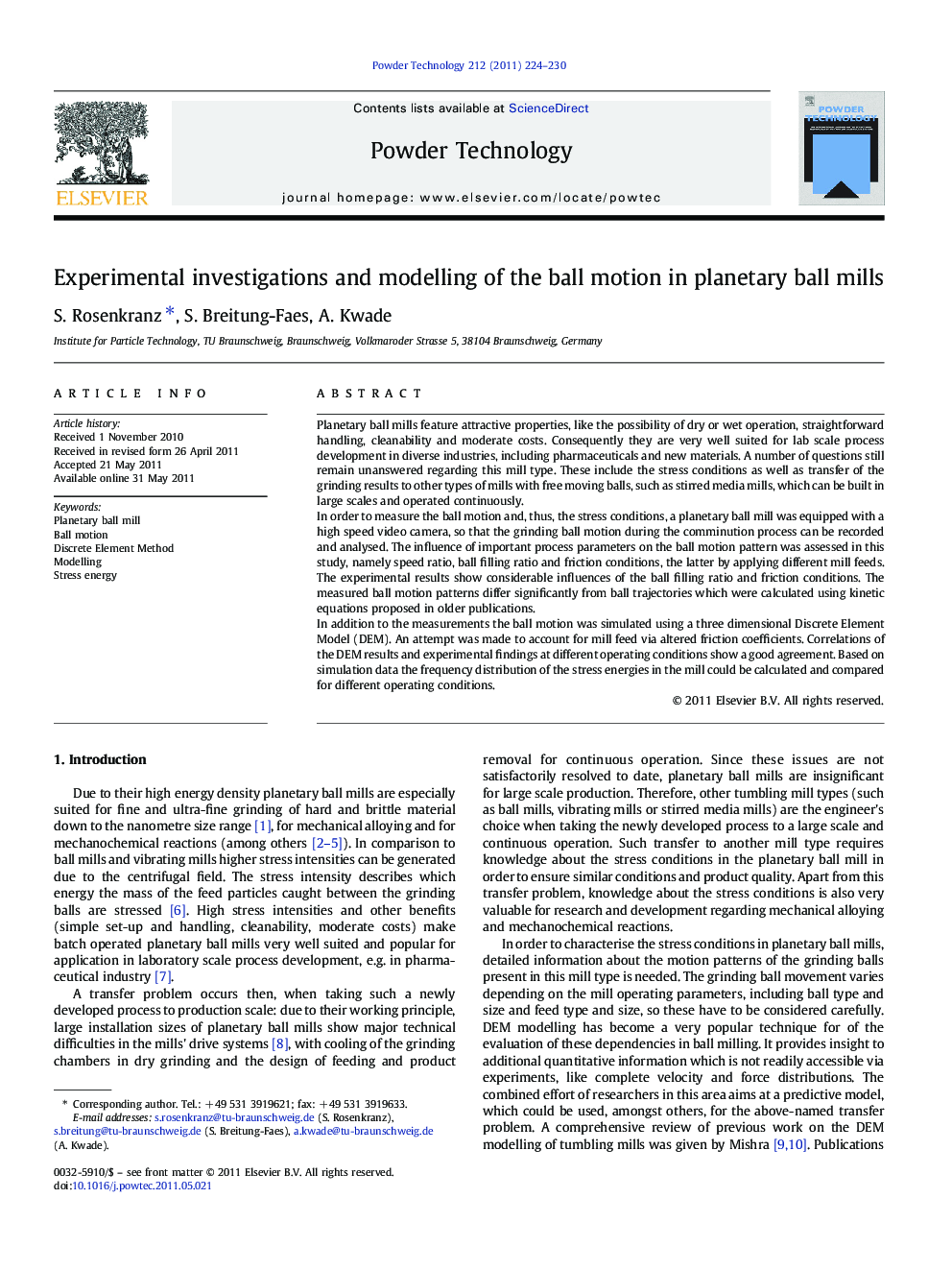| Article ID | Journal | Published Year | Pages | File Type |
|---|---|---|---|---|
| 237439 | Powder Technology | 2011 | 7 Pages |
Planetary ball mills feature attractive properties, like the possibility of dry or wet operation, straightforward handling, cleanability and moderate costs. Consequently they are very well suited for lab scale process development in diverse industries, including pharmaceuticals and new materials. A number of questions still remain unanswered regarding this mill type. These include the stress conditions as well as transfer of the grinding results to other types of mills with free moving balls, such as stirred media mills, which can be built in large scales and operated continuously.In order to measure the ball motion and, thus, the stress conditions, a planetary ball mill was equipped with a high speed video camera, so that the grinding ball motion during the comminution process can be recorded and analysed. The influence of important process parameters on the ball motion pattern was assessed in this study, namely speed ratio, ball filling ratio and friction conditions, the latter by applying different mill feeds. The experimental results show considerable influences of the ball filling ratio and friction conditions. The measured ball motion patterns differ significantly from ball trajectories which were calculated using kinetic equations proposed in older publications.In addition to the measurements the ball motion was simulated using a three dimensional Discrete Element Model (DEM). An attempt was made to account for mill feed via altered friction coefficients. Correlations of the DEM results and experimental findings at different operating conditions show a good agreement. Based on simulation data the frequency distribution of the stress energies in the mill could be calculated and compared for different operating conditions.
Graphical abstractImportant process parameters influencing the ball motion pattern in a planetary ball mill were assessed by image analysis. Experimental results show considerable influences of ball filling ratio and friction conditions. The ball motion was simulated by the Discrete Element Method. Based on simulation data the frequency distribution of the stress energies could be calculated and compared for different operating conditions.Figure optionsDownload full-size imageDownload as PowerPoint slideResearch Highlights► No considerable influence of speed ratio k in the range − 3 < k < − 1 on the grinding ball motion pattern was observed. ► Grinding ball motion is strongly affected by the friction arising, among others, from different feed materials. ► Friction necessarily has to be considered in studies on stress conditions in the planetary ball mill. ► Results suggest the possibility to account for mill feed by changing friction coefficients in DEM model. ► Simulation data permit comparison of stress energy distributions at different operating parameters.
